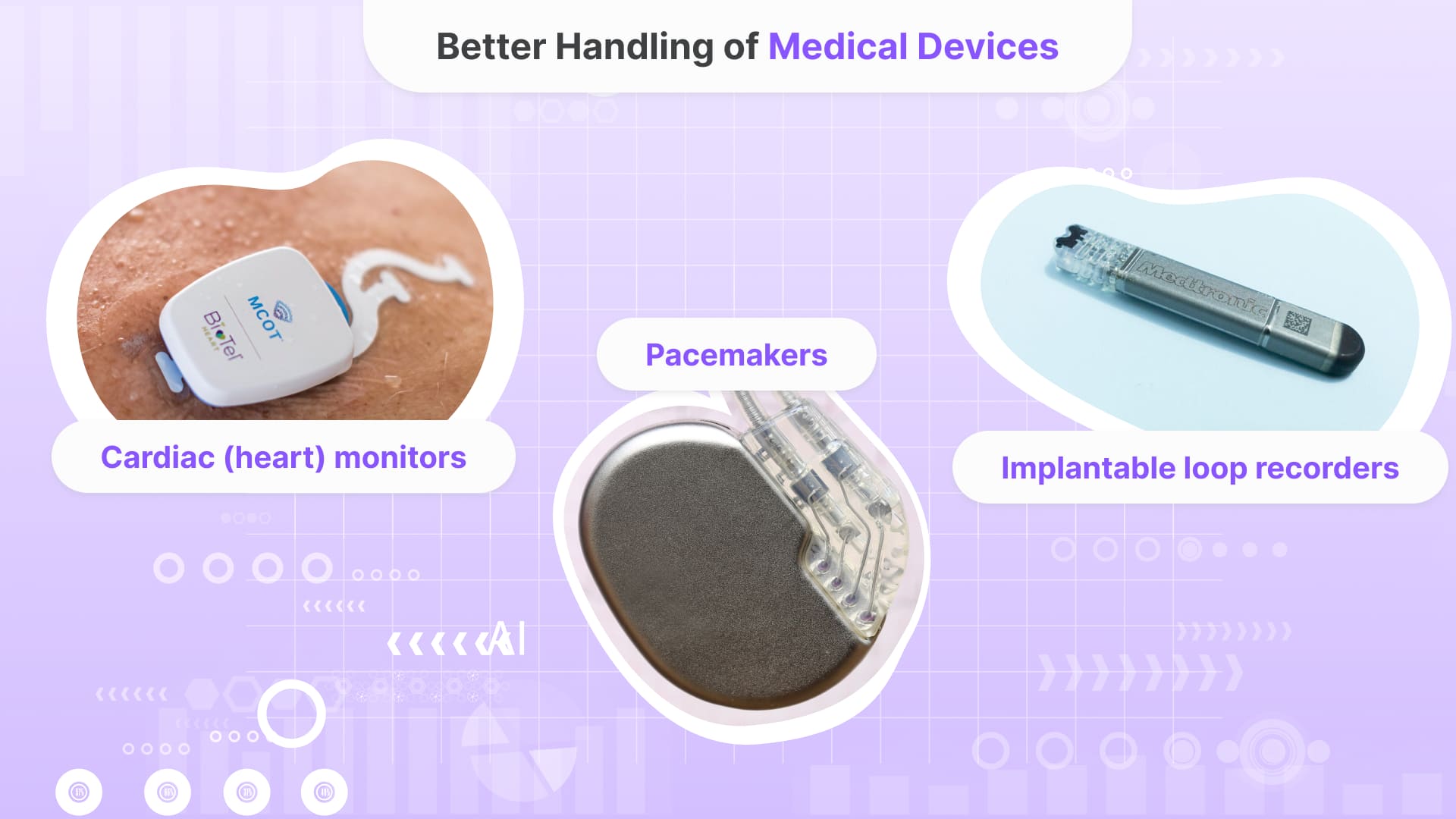

Cloud Connectivity for Medical Device Networking: Don’t Miss Out on It
Today, one of the most exciting developments in healthcare is the use of smart technology, often called the Internet of Medical Things (IoMT). In simple terms, IoMT connects medical devices or apps to a cloud server. This means all the data these devices gather goes straight to one central place where it can be stored, reviewed, and analyzed. Imagine your heart monitor or blood sugar tracker sending updates directly to your doctor’s computer. That’s IoMT in action!
Connecting medical devices to the cloud like this opens up amazing new ways to take care of patients. It also makes things run smoother and helps teams work together better than ever before. That’s probably why the market for this smart healthcare technology is expected to grow to around $136 billion by 2025.
Let’s take a look at some of the top benefits of connecting medical devices and how it’s changing the way we look after patients.
Making Telehealth Easier with Smart Devices
The way medical devices can connect to the Internet has made telehealth (healthcare services over the Internet) more possible and better than ever. Now, there are online services for virtual doctor appointments and wearable devices that keep an eye on important health information.
These devices and services have completely changed how patients and doctors handle important health data and regular health check-ups. For instance, patients who have heart issues and need constant monitoring can now send their heart readings directly to their doctors through a device that connects to the cloud.
Also, patients who need to keep track of their blood pressure, oxygen levels, or blood sugar don’t have to do it all by themselves anymore. Thanks to these smart devices, their doctors can watch their health and talk to them from anywhere, as long as they have an internet connection.
So this technology is changing the usual way of healthcare and making it possible for patients to get high-quality care no matter where they are.
IoMT & Better Decisions with Data
Adding to the previous point, the Internet of Medical Things (IoMT) technology makes it easy for doctors to collect and understand health data. Just think about all the different health devices people use these days. Each one sends lots of health information to the doctors, like:
Heart rate and ECG monitors
Blood pressure trackers
Diabetes monitors
Fitness wearables
Sleep monitors
Implantable medical devices
If this data isn’t brought together in one place, it’s tough for doctors to get a full view and decide on the best treatment. But, when these healthcare devices are connected and all their data is sent to the cloud, doctors can see everything they need to know about each patient. This helps them make smarter decisions based on data, which leads to better health results.
Better Handling of Medical Devices

Some medical devices, like fitness trackers, get better with smart technology. But for more crucial medical tools, being connected to the Internet can save lives. Devices like:
Pacemakers
Cardiac (heart) monitors
Implantable loop recorders
These devices track very important health information that needs to be watched all the time. Connecting them to the Internet means there’s a constant link to these devices, giving doctors updates on how they’re working. If something unusual shows up in the data, doctors can figure out if the issue is with the patient or the device itself.
Also, by using predictive analytics on the data stored in the cloud, healthcare providers can guess when a device might stop working correctly. Then, they can fix the problem before it causes any harm.
Better Teamwork in Healthcare
The Internet of Medical Things (IoMT) helps healthcare become more efficient by making it easier for medical professionals to work together, share information, and create well-rounded treatment plans for complex health issues.
Remember how things used to be? Doctors had to fax paper records and medical details to specialists. This method was slow and limited; specialists only knew what was written in those papers.
Now, with smart technology in healthcare, collaborating with specialists is much simpler. All the documents can be stored online in a medical record and shared securely with other clinics. Primary care doctors can keep collecting data from their patients and share this information with specialists, ensuring they have the most current data.
This approach gets rid of old-fashioned ways of communicating and makes sure all healthcare providers have the information they need to achieve the best results for patients.
Final Word
Choosing the right way to connect medical devices can bring a lot of advantages to any healthcare group. Plus, there are always new options being developed.
Cloud connectivity for medical device networking allows for constant, easy, and safe collection of health data from patients. This is just one-way smart medical technology can transform how doctors provide care. And when it comes to making things more efficient, this is just the beginning!
Faq
What is cloud connectivity in the context of medical device networking?
Cloud connectivity in medical device networking refers to the integration of medical devices with cloud-based systems, enabling remote access, data storage, and analysis. This allows healthcare providers to monitor and manage patient data in real-time, facilitating more efficient and personalized care. It also supports telemedicine and remote patient monitoring by seamlessly transmitting data from patient devices to healthcare professionals, regardless of location.
How does cloud connectivity enhance the functionality of medical devices?
Cloud connectivity in medical devices enhances functionality by enabling remote monitoring and data analysis, which leads to improved patient care and disease management. It facilitates seamless data sharing between healthcare providers, ensuring more accurate and efficient diagnosis and treatment plans. Cloud connectivity also allows for real-time updates and maintenance of the devices, ensuring they operate with the latest software and comply with current medical standards.
What are the benefits of leveraging cloud technology in medical device networking?
Leveraging cloud technology in medical device networking offers several benefits. Firstly, it enables real-time data access and sharing among healthcare providers, enhancing patient care and enabling more accurate diagnoses. Secondly, it provides scalable storage and computing resources, facilitating the management of large volumes of medical data. Finally, cloud technology enhances collaboration between different healthcare systems, improving overall healthcare efficiency and innovation.
How does cloud connectivity improve remote monitoring and control of medical devices?
Cloud connectivity enhances remote monitoring and control of medical devices in several ways. Firstly, it enables real-time data transmission, allowing healthcare providers to monitor patient health remotely and respond swiftly to changes. Secondly, it facilitates the integration of devices, leading to more coordinated and efficient patient care. Lastly, cloud connectivity provides advanced data analytics, helping in the early detection of potential health issues and personalized treatment plans.
Tell us about your project
Fill out the form or contact us

Tell us about your project
Thank you
Your submission is received and we will contact you soon
Follow us
